Share
The Voting Selfie as Social Proof
For much of its history, photography has been seen as a reflection of reality. Ralph Waldo Emerson said, “Photography is distinguished by its imm...
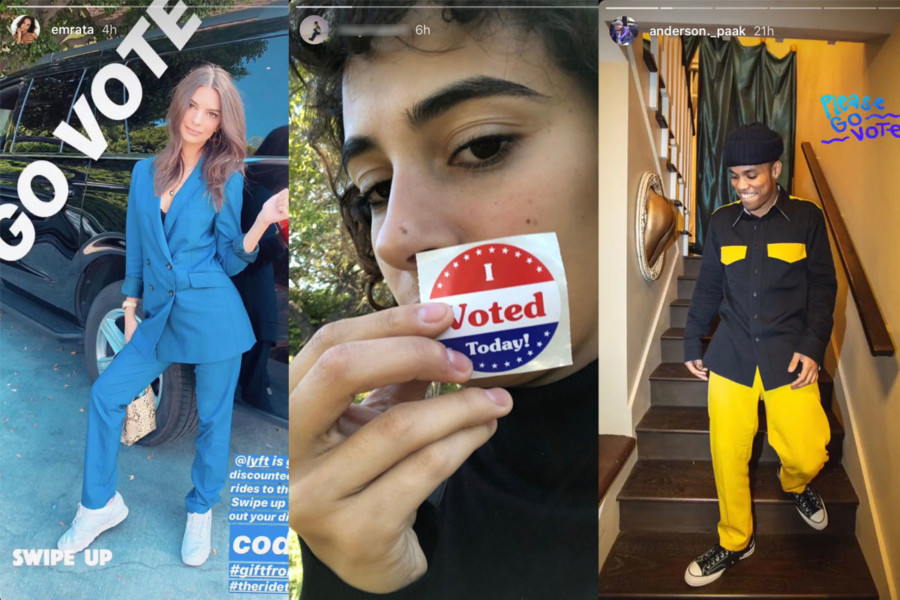
For much of its history, photography has been seen as a reflection of reality. Ralph Waldo Emerson said, “Photography is distinguished by its immediacy, its authenticity, and the remarkable fact that its eye sees more than the human eye. The camera shows everything.” Even in a fake news environment, photos are still offered as visual proof for everything from devastating fires to the telltale clues of murder to the best dressed.
But the age of social media has helped shepherd the use of photo as social proof. Photographic social proof not only offers visual evidence that something occurred, it causes others to adapt to a certain behavior while simultaneously celebrating the subject as an influencer.
The selfie exemplifies the intersection of social proof and photography. Although it’s often reductively viewed as a narcissistic expression of a younger generation (which it certainly can be), it also shapes where people go and what they do.
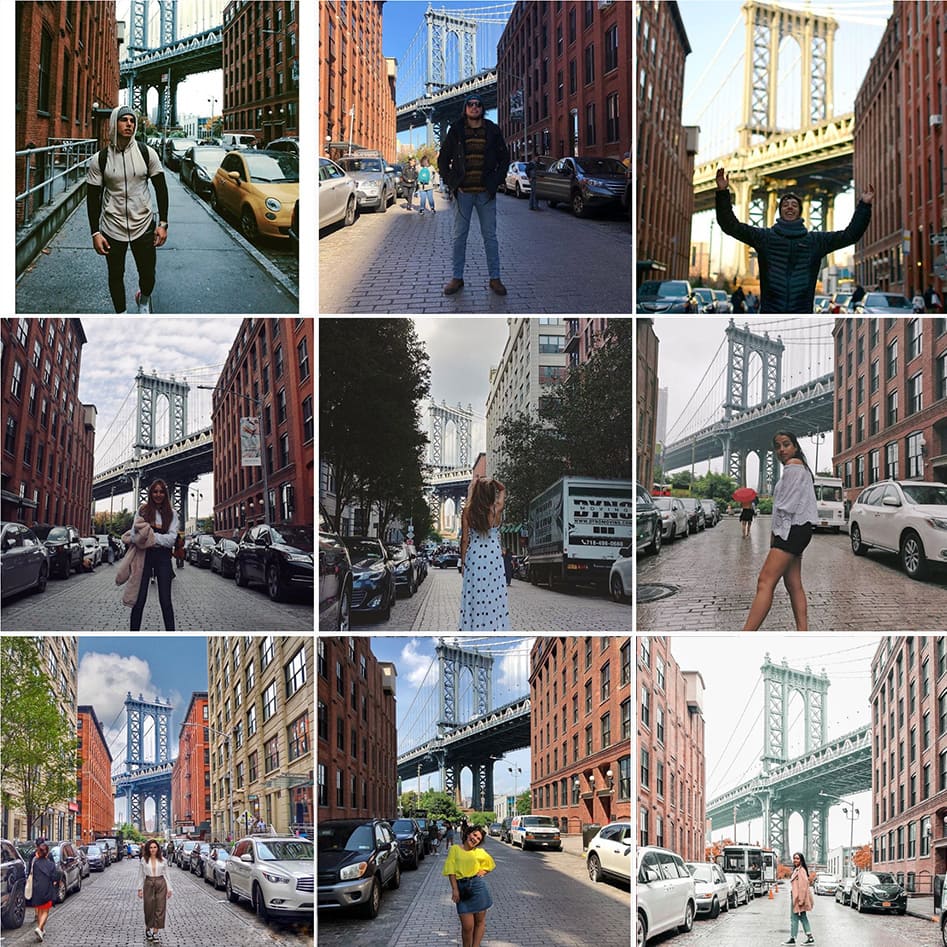
Washington Street in New York’s DUMBO neighborhood is inundated with selfie-seekers
Geotagging a selfie in a visually iconic area literally alters where people go, so much so that businesses cater their interior designs to be “grammable” – seemingly worrying less about such mundane concerns as food quality or informational content. The selfie necessarily declares that what I’m doing is cool, even if I portray myself as uncool.
Large selfie clusters tends towards the hedonistic destinations and activities – from Coachella to Burning Man to Iceland – which makes it all the more curious to see such a glut of voting selfies during the 2018 midterm elections.
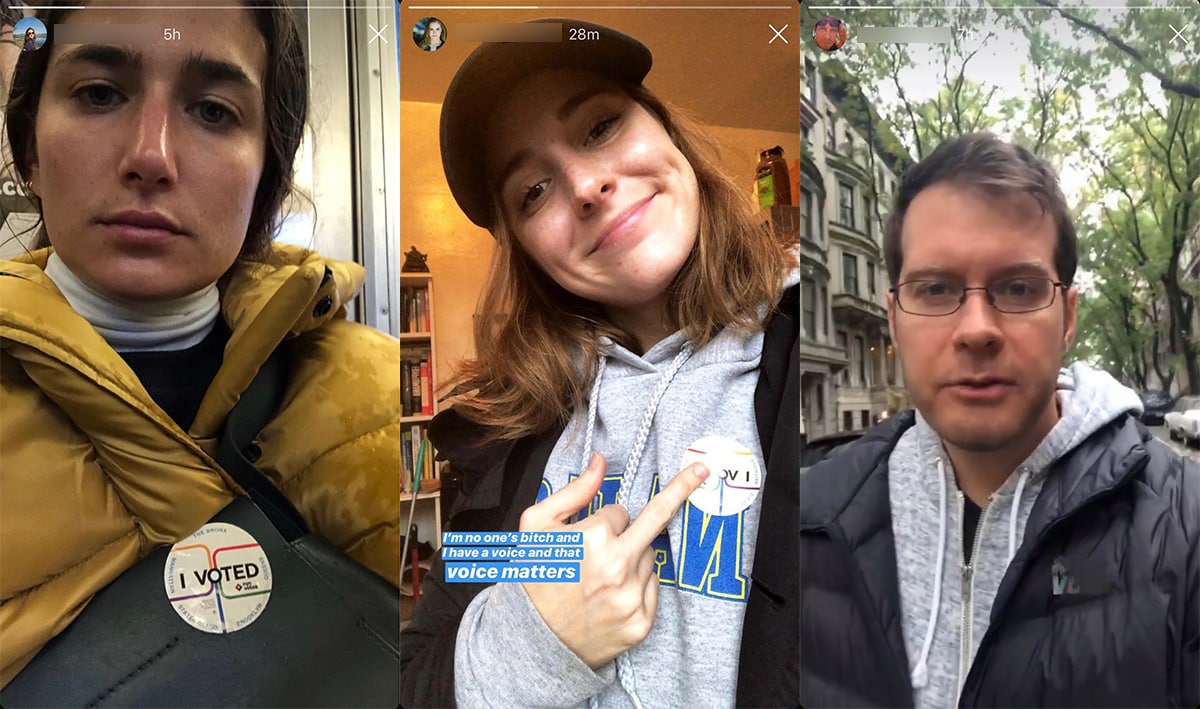
With civic engagement on many fronts in precipitous decline over the past few decades, it was heartening to see my Instagram and Facebook feeds filled with friends from across the country using the voting selfie as social proof. The voting selfie was often disembodied with individuals only including their ubiquitous “I Voted” sticker.
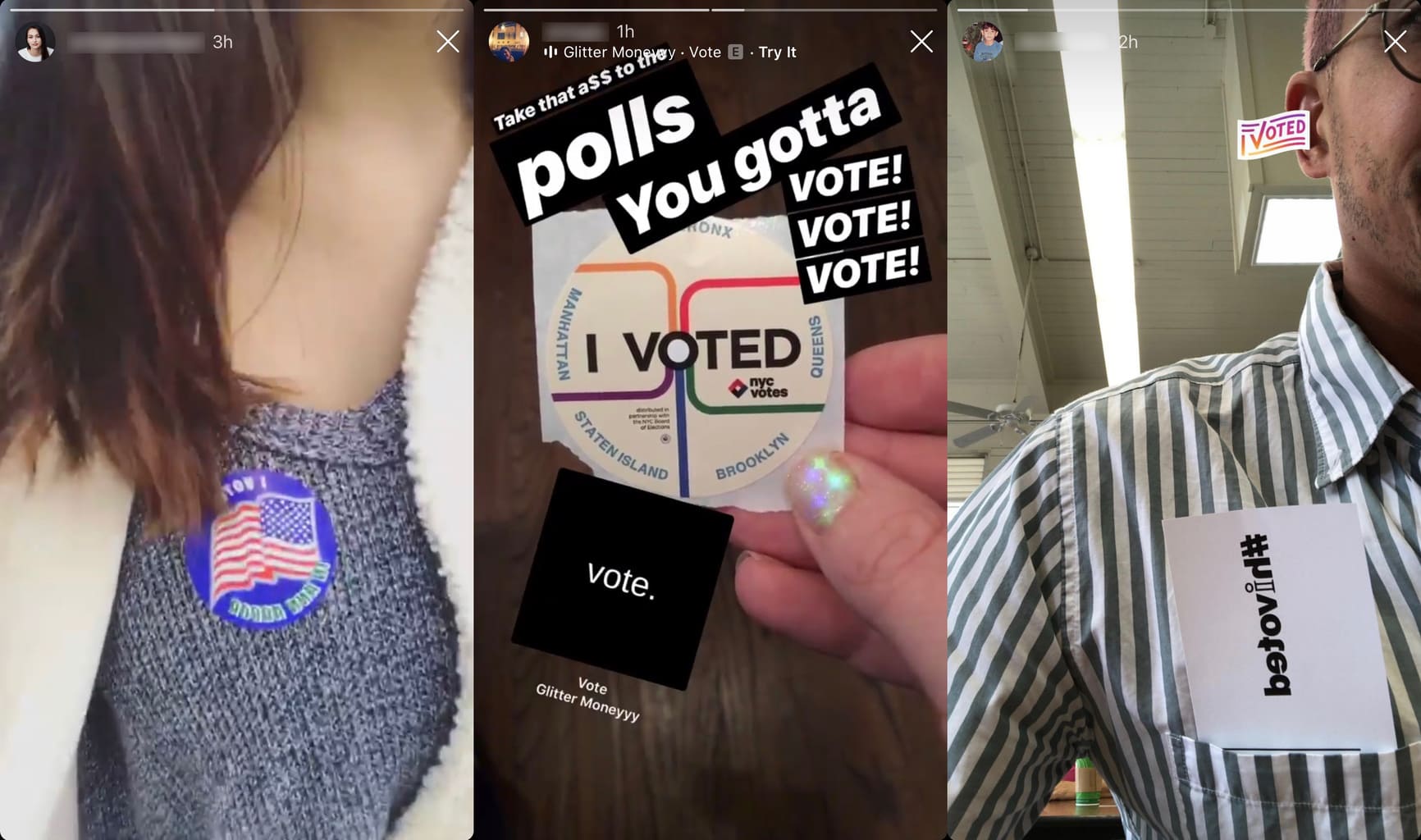
Many people used their kids or pets as a proxy representation as they often do.
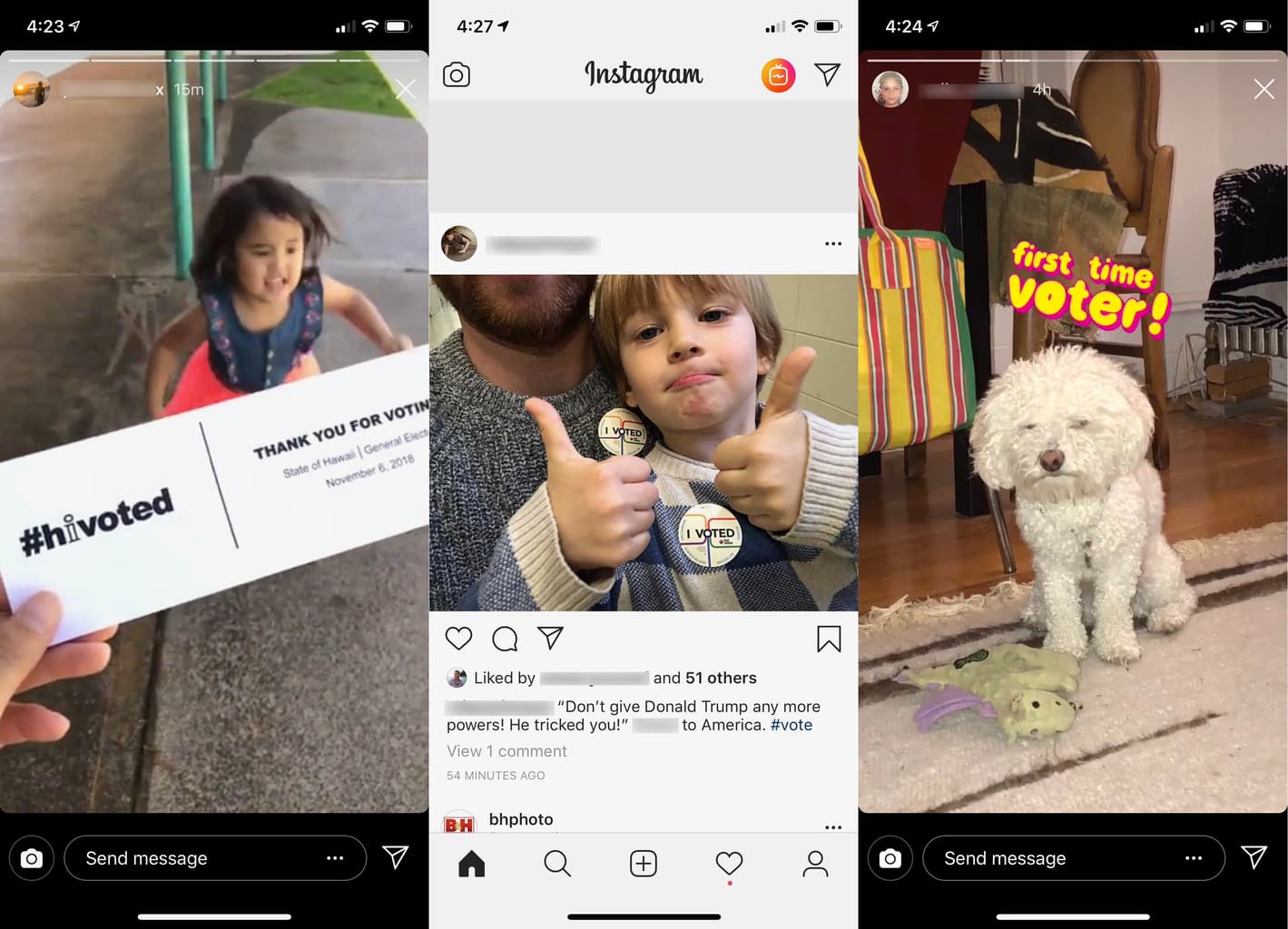
It’s unlikely that the selfies significantly altered voting behavior on November 6, but it is notable that voting hit a 50-year high and many people felt compelled to document their conformity to honoring a civic responsibility. The voting selfie served its function by tacitly saying, “I voted. Shouldn’t you?”
Of course, the brief 24-hour duration of the general election make the voting selfie somewhat obvious for a target cause. But it’s somewhat interesting that a similar level engagement of photo social proof doesn’t happen for flu vaccinations, blood donation, or other community service. The Ice Bucket Challenge might be the last cause-based initiative that used the selfie as social proof in such a widespread and viral way.
And how do you know that social proof works? The backlash…



